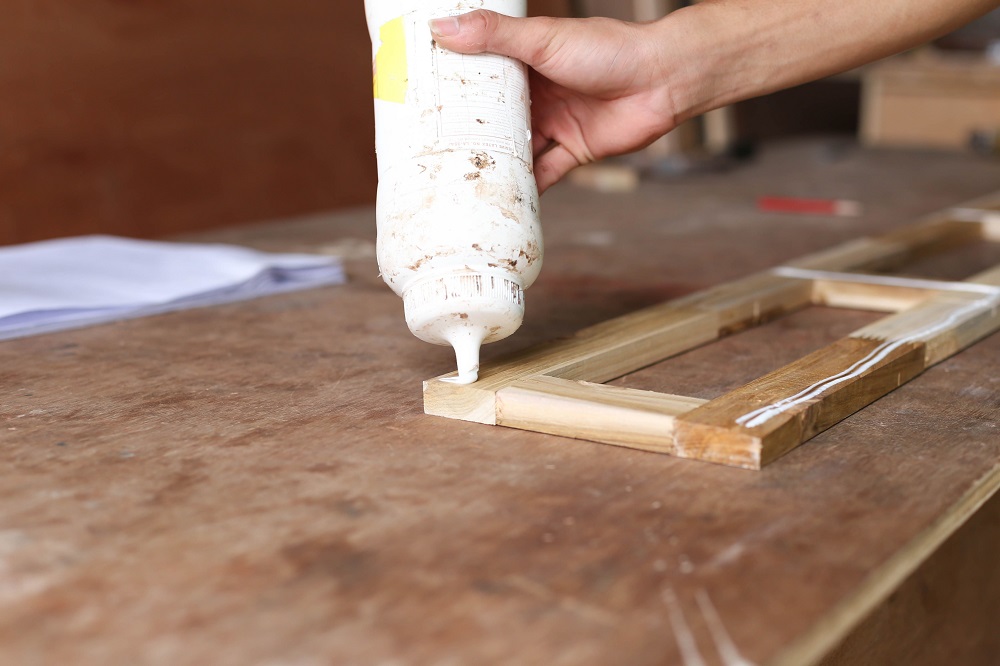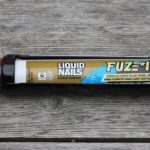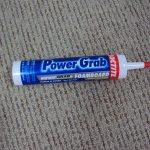Liquid nails are an adhesive product used in a variety of projects and applications, from construction to hobby crafts and more.
It’s important to know how long liquid nails take to dry, so you can plan your project accordingly and get the best results possible with your project.
So, how long do liquid nails take to dry?
If you’re looking for quick fixes for cracked walls or loose tiles, then liquid nails are for you. However, before you start gluing, you should know how long the liquid nails will take to dry.
Liquid nails dry pretty quickly, usually in less than an hour.
However, the drying process depends on several factors, such as the thickness of the glue and the type of surface you’re adhering to.
For example, liquid nails will dry a lot faster on walls than on floor tiles or wooden floors.
What Are Liquid Nails?
Contents
- 1 What Are Liquid Nails?
- 2 What Types of Projects Are Liquid Nails Used For?
- 3 How To Prepare Surfaces For Application
- 4 Tips For Applying Liquid Nails
- 5 Drying Time For Different Types Of Liquid Nails
- 6 Factors That Affect Liquid Nails Drying Time
- 7 Tips For Speeding Up The Liquid Nails Drying Process
- 8 Cleaning Up After Applying Liquid Nails
- 9 Conclusion
Liquid nails are an adhesive product made from polymers and other materials that form a strong bond when applied between two surfaces.
They come in various forms, such as tubes or cartridges that can be used with caulking guns or syringes, depending on the type required by the job at hand.
These adhesives can be used on a wide range of materials, including wood, metal, plastic, and even ceramic tiles, providing a strong bond.
What Types of Projects Are Liquid Nails Used For?
There is a wide range of projects where liquid nails can be used, such as
- Bonding wood together when making furniture or repairing damaged woodwork around the home
- Creating outdoor structures like decks or patios
- Sealing gaps between walls or floorboards
- Fixing ceramic tiles onto surfaces
- Attaching roof shingles
- Installing skirting boards
- Sticking pictures on walls
- Affixing decorative mouldings to furniture, and much more.
The versatility of these adhesives makes them suitable for almost any project requiring a strong bond between two surfaces.
How To Prepare Surfaces For Application
Before applying any type of liquid nail, it is important to ensure that both surfaces are clean and free from dust or dirt, which could affect the strength of the bond.
This can be done using either a vacuum cleaner (for larger areas) or a damp cloth (for smaller areas).
If there is any paint present, it should also be removed prior to application as this could also reduce the strength of the bond.
After cleaning it is important to wait until both surfaces are completely dry before proceeding with application.
Tips For Applying Liquid Nails
When applying liquid nails, it is important to take care not to overapply, as this will create excess mess which may need cleaning up afterwards.
It is also important not to use too much pressure when pushing down on the applicator, as this may cause air bubbles, which will weaken the bond once it has dried.
Finally, in order to get the best results from your project, make sure you carefully read all instructions before using.
Drying Time For Different Types Of Liquid Nails
The drying time for different types of liquid nails varies depending on several factors, such as temperature and humidity levels, in addition to other environmental conditions.
Generally speaking, however, most standard types will take between 1-2 hours before they reach full strength, but some specialty products may take longer than this.
So, always check product labels before use if you’re unsure about drying times.
Factors That Affect Liquid Nails Drying Time
Liquid Nails is a fast-drying glue that is commonly used for masonry projects. However, the drying time of the liquid nails is affected by various factors.
Factors that affect the drying time of liquid nails include:
Temperature
Liquid nails dry faster in hot temperatures than in cold weather.
This is because heat speeds up the evaporation process. The faster the evaporation rate, the faster the liquid nail dries.
Humidity
Liquid nails dry faster in humid conditions than in dry conditions.
This is because humid conditions speed up evaporation. As a result, the liquid nails dry faster in humid conditions than in dry conditions.
Air flow
Liquid nails dry faster in windy conditions than in calm conditions.
This is because wind forces moisture out of the area, thus speeding up evaporation. The faster the evaporation rate, the faster the liquid nail dries.
Density of the substrate
Liquid nails dry faster on dense substrates than on porous substrates.
This is because dense substrates reduce the surface area available for evaporation to take place.
As a result, the liquid nails dry faster on dense substrates than in porous substrates.
Surface tension
Liquid nails dry faster on surfaces with higher surface tension than on surfaces with lower surface tension.
This is because surface tensions increase the speed at which liquid moves.
As a result, the liquid nails dry faster on surfaces with higher surface tension than on surfaces with lower surface tension.
Tips For Speeding Up The Liquid Nails Drying Process
After successfully applying liquid nails, the next step is to let the adhesive set.
This can take several hours and can pose a challenge to business owners, especially if your project deadline is approaching.
Here are some tips that you can use to speed up the drying process:
- Apply the adhesive to a single surface at a time – Work in sections to ensure that the adhesive dries evenly.
- Apply the adhesive in thin layers – This ensures that the liquid nails dry quickly. Applying a thick layer may cause the adhesive to become difficult to work with.
- Apply the adhesive to a warm surface – Applying liquid nails to a warm surface speeds up the drying process because heat speeds up chemical reactions.
- Let the adhesive dry overnight – The adhesive has to set before it can be used properly.
- Use a hair dryer or heat gun to dry the adhesive – Heat dries out the adhesive quickly. However, be careful not to overheat the adhesive or apply too much heat, as the adhesive may melt or blister.
- Use a fan – Blowing air over the adhesive will speed up drying.
Cleaning Up After Applying Liquid Nails
When gluing something to wood, it’s important to use liquid nails.
It sticks well and dries quickly. However, it’s important to clean up after applying liquid nails.
If you leave a puddle of liquid nails on your table, it will dry and become hard as a rock. It’ll take a lot of force to scrape it off, and your knife may break.
To avoid this, make sure the liquid nails are completely dried before pouring them into a container.
Also Read: Will Glue On Nails Come Off In The Shower?
Conclusion
In conclusion, liquid nails take 24 hours to dry.
However, it’s possible to accelerate the drying process by placing the nails in a well-ventilated area. This way, the fumes can dissipate faster.
Overall, liquid nails are a fantastic product for a wide variety of projects, such as building fences and holding cars together.






